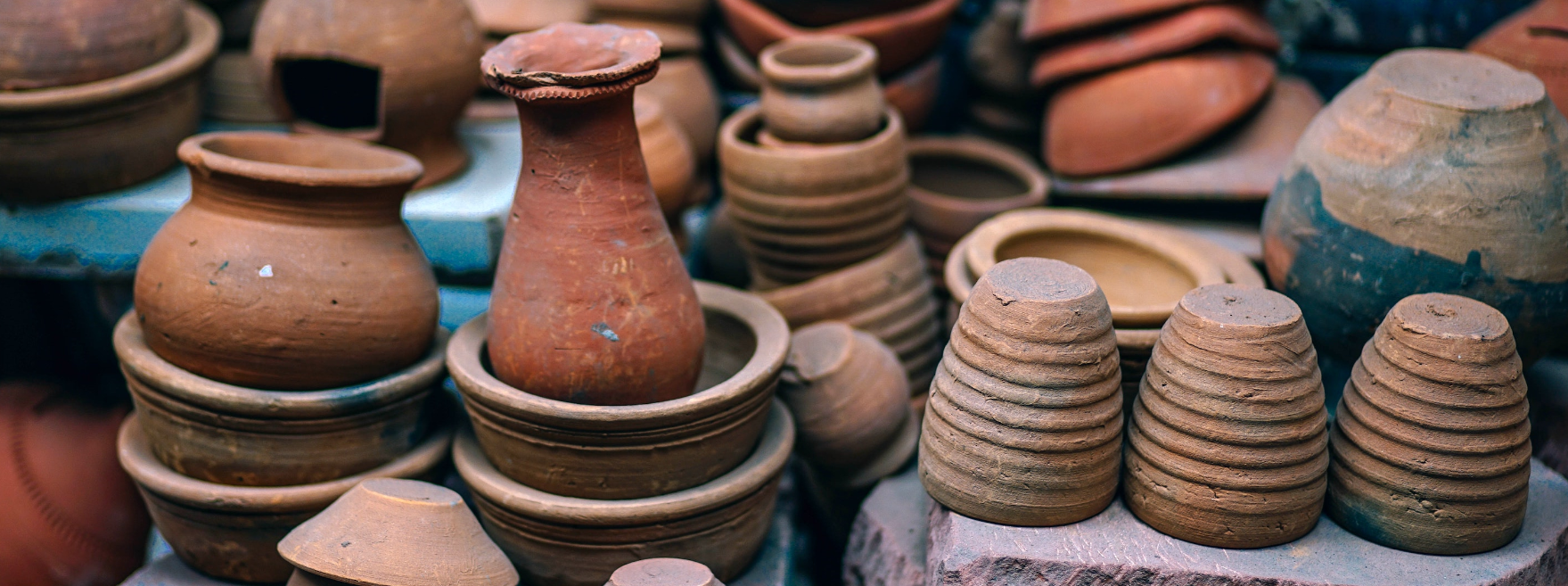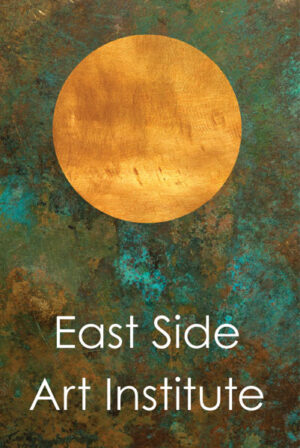About
The main goal of this course is that you will be able to create as well as appreciate expressive, beautiful three-dimensional clay forms. You will have an understanding of other cultures and periods of human expression in clay and finally, you will begin to be proficient at forming clay objects yourself.
Specifically, we will build knowledge and skills in the following areas:
- Nature of clay use and types of clay.
- Hand-building techniques.
- Coil method
- Slab method (Hard and soft)
- Wheel work: cylinders, cups, bowls, plates
- Glaze application
- Firing procedures
Project presentation and final critique.
Topics this Semester will Include
Introduction to clay the material… where it comes from, how it was formed, how it is gathered, and early methods for forming clay objects, pinching and coiling.
Introduction to the potter’s wheel, centering the clay, forming bowls and cylinders… trimming and burnishing on the wheel.
How a sculpture is made with clay, slab construction, extrusion, tile making, and slip casting.
Texturing and coloring clay, the color used in clay and slips, engobes, oxides, and underglazes as well as non-traditional decorative techniques including cold work.
Glazing: The function of glazes and how they are made up… simple glaze testing… proper application, health, and safety.
Firing: Firing methods used throughout history including primitive pit firing and oxidation firing.
The main emphasis will be on your work, your growth in the medium, your ability to create expressive, unified, and cohesive three-dimensional forms in clay.
Learning Outcomes for this Course
Technical:
- You will learn about clay and glaze composition and formulation.
- Will be on hand-built ceramic forms. You will learn to increase the scale of your work all the while keeping control over the quality, coherence, and contour of your work.
- You will explore a variety of Hand-building methods including extended pinch, slab built, and extruded forms.
- You will learn firing and glazing methods for stoneware clay.
Aesthetic:
- To appreciate ceramics from a historical perspective through the study of original pieces at The Denver Art Museum and University of Colorado Museum that span from Neolithic times through to the present.
- To appreciate how a unified, coherent form that is finely crafted is beautiful in its own right.
- To understand how finishing and decorating contribute or detract from your intention as an artist.
Academic Expectations
Attend all classes, care about the work you are doing in class, see it through, visit the ceramics studio between classes to move your work along, help others in the class to succeed, keep the studio clean. The final grade is based on a portfolio of fifteen vessels showing good progress in the medium. The portfolio may include wheel-thrown, slab built, pinched or extended pinch, or extruded pots. Attendance is crucial. A maximum of 3 absences is allowed.
Tradition of Respect
In our class:
- Everyone is allowed to feel they can work and learn in a safe and caring environment;
- Everyone learns about, understands, appreciates, and respects varied races, classes, genders, physical and mental abilities, and sexualities;
- Everyone matters;
- All individuals are to be respected and treated with dignity and civility; and
- Everyone shares the responsibility for making our class and this studio a positive and better place to live, work, and learn.
Materials
All clay, glazes, and firing will be purchased for you for the class as a part of your tuition. The studio has some tools you can borrow; however, everyone should bring a basic set of tools. Additional clay is for sale at the studio.
Suggested Reading
Periodicals
Ceramics Monthly. 1609 Northwest Blvd., Columbus, Ohio 43212
“The world’s most widely read ceramic arts magazine”
Studio Potter. Box 172, Warner, New Hampshire 03278
“Studio Potter is a magazine for the community of potters everywhere. It is written by potters and directed toward fellow-potters who earn their living by making pots…”
Recommended Books (Some of these books are available to read at the studio)
Making Marks: Discovering the Ceramic Surface by Robin Hopper
The Craft and Art of Clay (3rd Edition) (Paperback), Susan Petersen
Centering in Pottery, Poetry, and Person. M.C. Richards, Middletown, CT., Wesleyan University Press, 1964, 1989…” CENTERING: that act which precedes all others on the potter’s wheel…”
A Potter’s Book. Bernard Leach, Faber, and Faber, London, 1960 this is the definitive “classic” work, which set the stage for the revival of clay craft in Europe and America.
Clay and Glazes for the Potter. Daniel Rhodes, Radnor, PA. Chilton, 2000, Another “classic”
Calendar
Weeks 1 and 2 – Introduction to the course. Demonstration: throwing cylinders on the wheel
Weeks 3 and 4 – Wheel throwing demonstrations for bowls
Weeks 5 and 6 – Demonstration: Cups, mugs, and handles
Weeks 7 and 8 – Demonstration: Plates and molded trays
Weeks 9 and 10 – Demonstration: Glazing, glaze testing, and formulation…. application
Weeks 11 and 12 – Firings, including a Raku firing Kiln loading and unloading as a class



